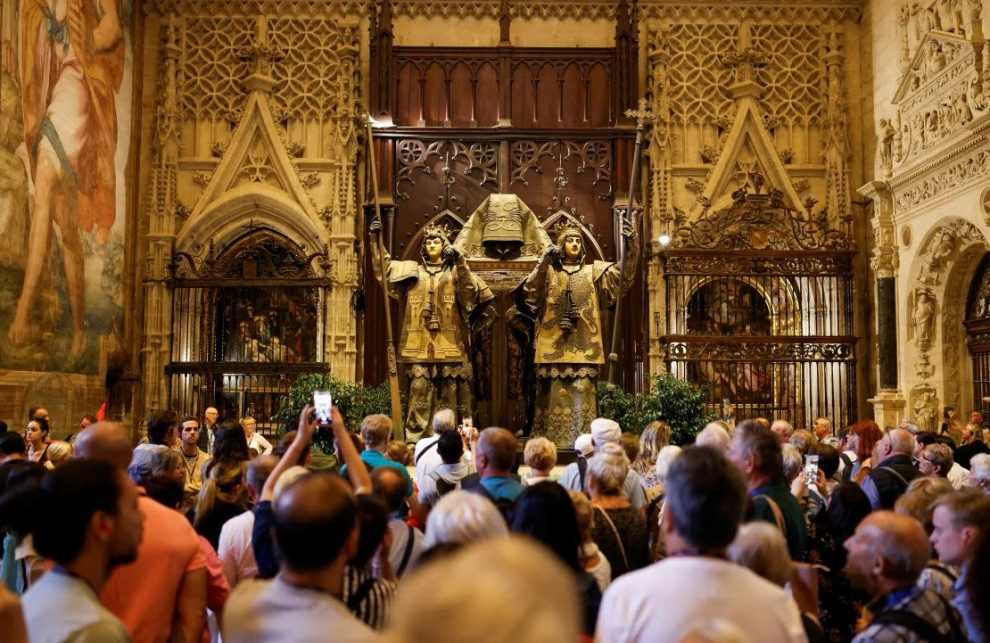(Reuters) – 15th-century explorer Christopher Columbus was a Sephardic Jew from Western Europe, Spanish scientists said Saturday, after using DNA analysis to solve a centuries-old mystery.
Several countries have argued about the origins and final burial place of this highly controversial figure, who led expeditions financed by Spain starting in the 1490s, paving the way for the European conquest of America.
Many historians have questioned the traditional theory that Columbus came from Genoa, Italy. Other theories range from him being a Spanish or Greek Jew, to Basque, Portuguese or British.
To solve the mystery, researchers carried out a 22-year investigation, led by coroner Miguel Lorente, in which they analyzed small samples of the remains buried in the cathedral of Seville, long identified by authorities as the last place of Columbus’s rest, although there had been rival claims.
They compared them with those of known relatives and descendants, and their conclusions were made known in a documentary titled “Colón DNA. Its true origin”, broadcast this Saturday on TVE.
“We have DNA from Christopher Columbus, very partial, but sufficient. We have DNA from Hernando Colón, his son,” Lorente said in the program.
“And in both the Y chromosome (male) and in the mitochondrial DNA (transmitted by the mother) of Hernando there are traits compatible with Jewish origin.”
About 300,000 Jews lived in Spain before the “Catholic Monarchs,” the Catholic monarchs Isabella and Ferdinand, ordered Jews and Muslims to convert to the Catholic faith or leave the country. Many settled around the world. The word Sephardic comes from Sepharad, or Spain in Hebrew.
After analyzing 25 possible locations, Lorente said it was only possible to say that Columbus was born in Western Europe.
On Thursday, Lorente said they confirmed previous theories that the remains in Seville’s cathedral belonged to Columbus.
The investigation into Columbus’s nationality was complicated by several factors, including the large amount of data. But “the result is almost absolutely reliable,” Lorente said.
Columbus died in Valladolid, Spain, in 1506, but wanted to be buried on the island of Hispaniola, which today is shared by the Dominican Republic and Haiti. His remains were transferred there in 1542, then to Cuba in 1795 and later, it was believed in Spain, to Seville in 1898.



![[Img #74661]](https://thelatestnews.world/wp-content/uploads/2024/12/The-power-of-ultrasound-150x150.jpg)











Add Comment